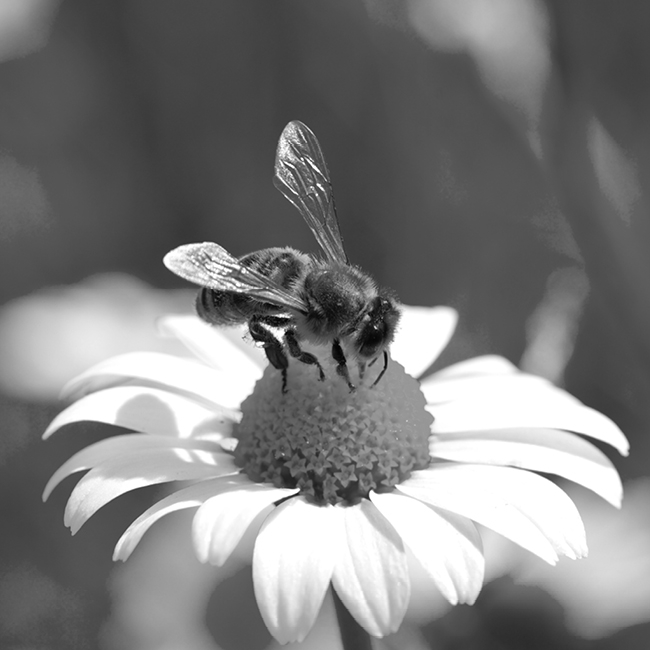Insect and tick allergy
Top tips
- Always carry your adrenaline injector if prescribed.
- Prevent insect stings and bites including tick bites where possible.
- Kill ticks using an ether containing spray and allow them to drop off – do not touch or move them.
- Remove stinger as soon as possible after bee sting. Flicking it out will reduce the amount of venom injected. Use the edge of your fingernail, a car key or credit card.
- Venom immunotherapy is available for people with bee and wasp stings
Some people have mild to moderate allergic reactions to insect bites or stings, while other people will have severe allergic reactions (anaphylaxis). Most insect bites and stings result in a swelling around the bite or sting that is often itchy and lasts only a few days. People are more likely to be allergic to insects that sting than those that bite.
Examples of insects that sting include bees, wasps and ants. Examples of insects that bite include mosquitos, midges and March flies. Ticks are arachnids, not insects (see section below on ticks).
Stinging insects that are most likely to cause anaphylaxis are bees, wasps and ants, particularly Jack Jumper ants. In Australia, most allergic reactions to insects are to the honeybee. The March fly is the most likely biting insect to cause anaphylaxis. Ticks can also cause anaphylaxis.
Signs and symptoms of anaphylaxis to insects
- Difficult/noisy breathing
- Swelling of tongue
- Swelling/tightness in throat
- Difficulty talking and/or hoarse voice
- Wheeze or persistent cough
- Persistent dizziness or collapse
- Pale and floppy (young children)
- Abdominal pain, vomiting
A rash alone is not life-threatening, but any of the other symptoms listed above are symptoms of anaphylaxis. Follow the ASCIA Action Plan if you have signs of anaphylaxis, lay down, give the adrenaline injector if available, and call an ambulance.
Preventing bites and stings
- Cover up with clothing to avoid bites use an insect repellent containing DEET.
- Brush off clothing and check for ticks after being outdoors if living in an area where ticks commonly live.
- Wearing light coloured clothing and avoiding perfumes may help reduce stings from bees.
- Wear shoes to avoid stepping on bees, wasps and ants.
- Be careful when drinking from open drink cans/bottles when outdoors as bees can crawl into the can/bottle.
- Wear long sleeves, long pants and gloves when working in the garden. To prevent tick bites, tuck your shirt into your pants and tuck your pants into your socks.
- If there is an ant, bee or wasp nest at your home, it should be removed by professionals.
Tick allergy
It is important that ticks are removed properly. Ticks should not be moved or touched. Disturbing a tick may cause more tick saliva to be injected into your body by the tick.
Allergic conditions linked with tick bites include:
- Mammalian meat allergy
- Less commonly, mammalian milks and mammalian products allergy, and
- Tick anaphylaxis
Watch our short animation or read the information below for information about how to safely remove ticks.
How to safely remove a tick
Freeze it, don’t squeeze it!
Ether containing sprays* freeze and kill the tick.
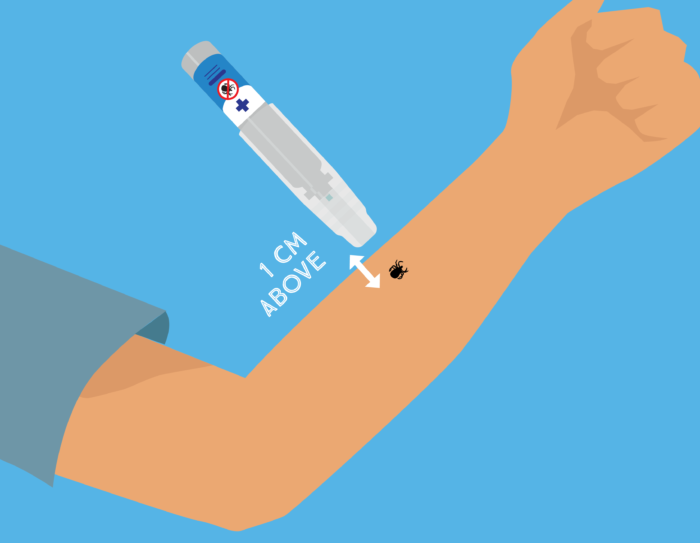
1. Take the ether containing spray and place it about 1 cm above the tick.
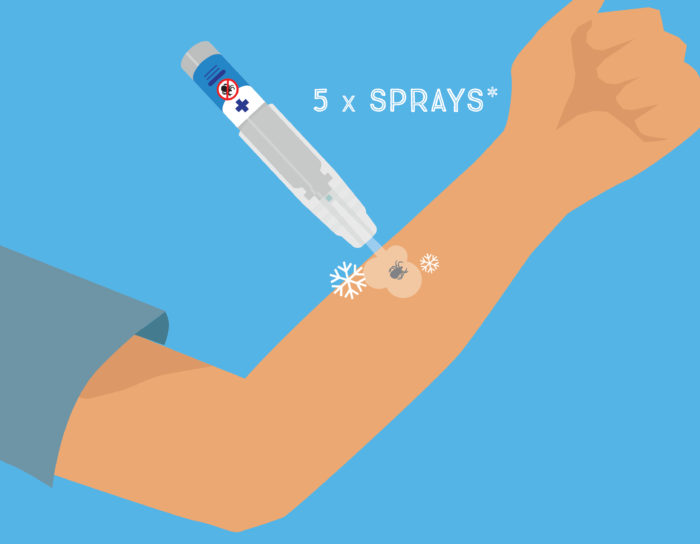
2. Using the ether containing spray, spray the tick 5 times
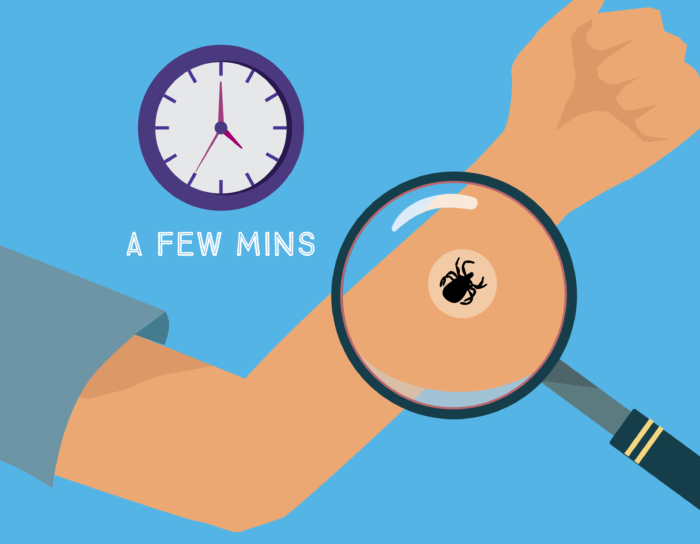
3. After a few minutes, if you have a magnifying glass check if the tick is still moving its legs. If the tick has stopped moving, it is dead.
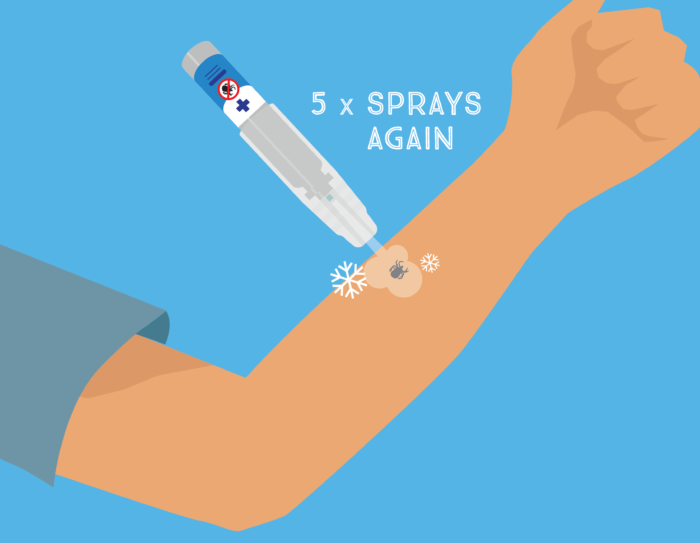
4. If you do not have a magnifying glass or if the tick is not dead, spray the tick 5 more times.
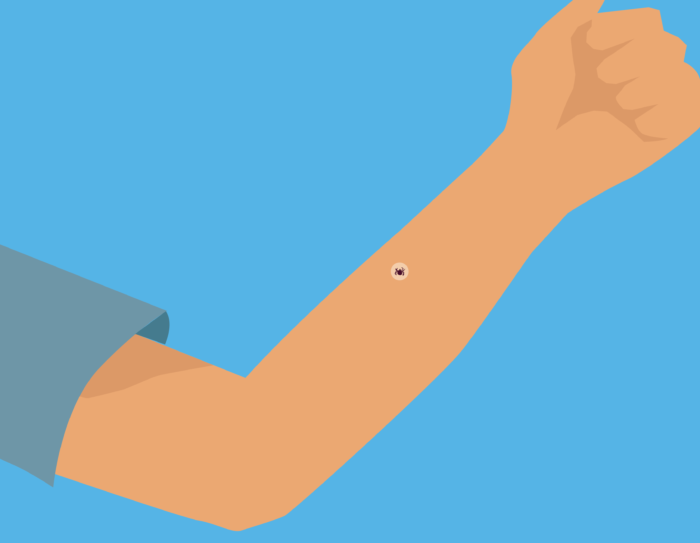

The dead tick should drop off.

5. If the tick does not drop off, have it safely removed by a health professional using fine-tipped forceps.
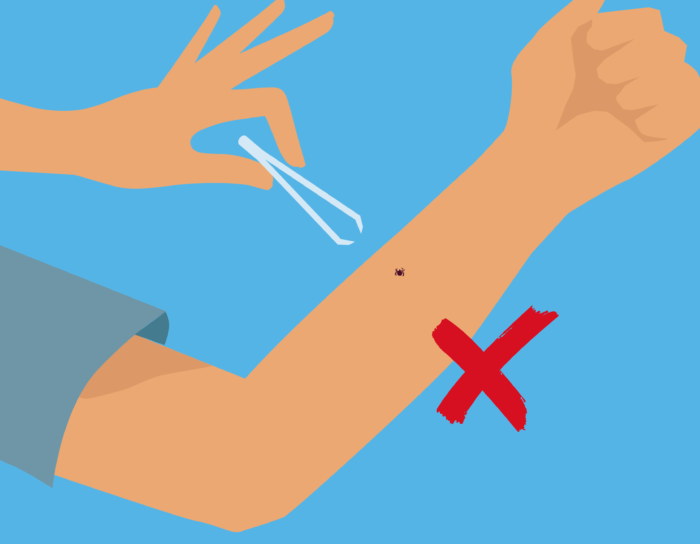
Do not use household tweezers to remove the tick, as this will cause it to squeeze tick saliva into your body, even if the tick is dead.
If you do not an have ether containing spray – seek medical help to remove the tick.
Ether containing sprays can be purchased over the counter from your local pharmacy.
If you have a tick allergy, follow the instructions on your ASCIA Action Plan.
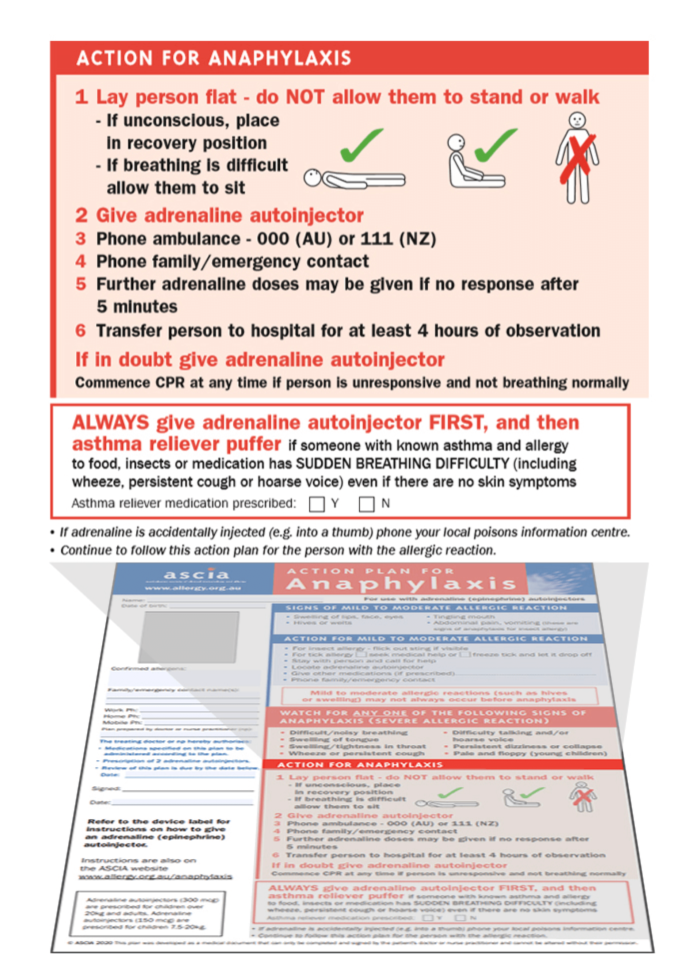
* Medi Freeze Tick Off or Wart-Off Freeze are types of ether containing sprays.
How to prevent tick bites
Watch our short animation or read the information below about how to prevent tick bites.
Removing ticks correctly to avoid allergies and other serious diseases can be tricky, so it is best to try and avoid tick bites and be prepared by doing the following:

Apply repellent containing DEET such as RID, Bushman, Aerogard or repellent containing Picaridin* such as OFF. Follow directions for when to reapply to maintain protection and check the label to see if the repellent can be used on young children. Use according to the manufacturer’s instructions.
Tuck your shirt into your pants and tuck your pants into your socks.
Wear permethrin-treated clothing to prevent tick bites.
When gardening, wear long sleeves, long pants and gloves.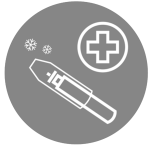
Have a tick freezing spray in your first aid kit.
Treat your backyard with an Australian Pesticides and Veterinary Medicines Authority (APVMA) approved insecticide if you live in an area where there are ticks. You may wish to employ a pest manager to undertake this.

